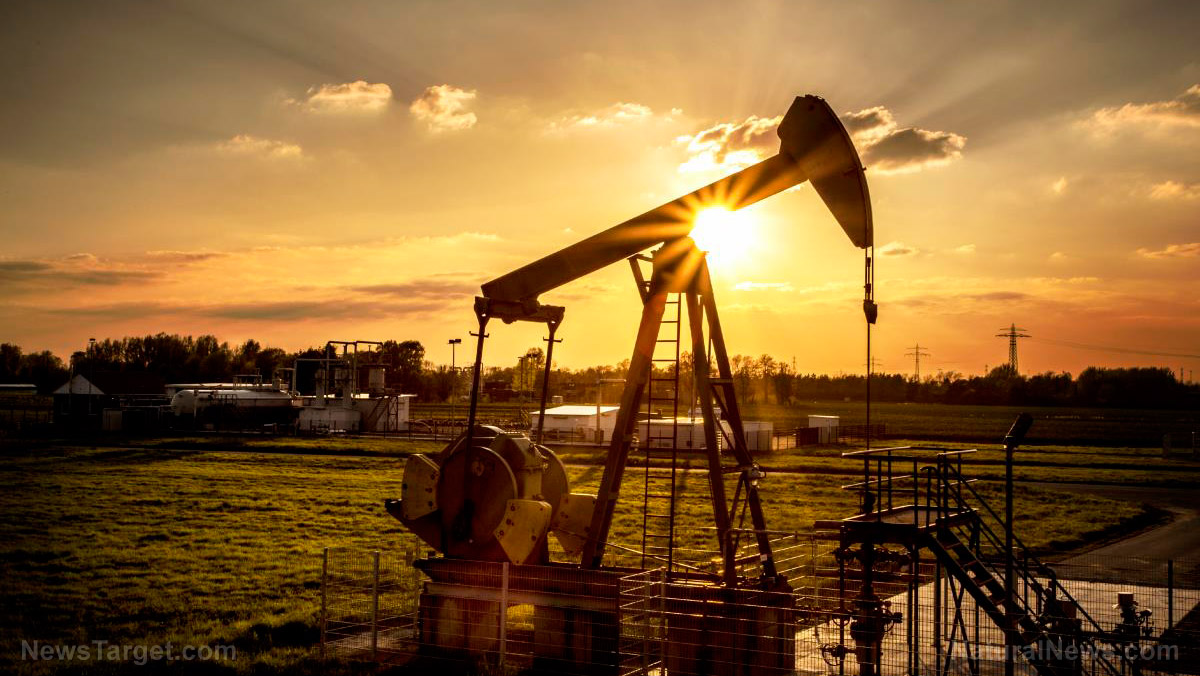
In an Oct. 18 speech, President-elect President Donald Trump vowed to "frack, frack, frack, and drill, baby, drill," signaling his commitment to ramping up oil and gas production in the United States if elected. Now that he's won the presidency, analysts are weighing his potential impact on energy markets, including crude oil, natural gas and renewable energy sectors.
Since announcing his candidacy, Trump has promised to boost domestic oil and gas output, roll back regulations and scale back green energy incentives under the current administration. This has already sparked market volatility. (Related: America's current economic problems pose a big challenge for the next president, Trump.)
For instance, U.S. crude oil prices dropped from $72 per barrel on Election Day, Nov. 5, to a little under $69 just a few days later following Trump's victory. Natural gas prices saw a more significant rally, climbing nine percent on Nov. 11.
According to Phil Flynn, an energy strategist, these fluctuations stem from market expectations that a Trump presidency would lift restrictions on oil and gas production, enabling the industry to respond more freely to supply and demand.
The U.S. oil industry has made a remarkable recovery since the pandemic. In 2018, the U.S. became a net oil exporter for the first time in 75 years, and production hit an all-time high of 13.5 million barrels per day (bpd) in October 2023. Flynn forecasts that under Trump, production could increase by one to two million bpd in the next few years, while Rob Thummel of Tortoise Capital Advisors expects U.S. oil output to grow by 300,000 to 500,000 bpd, with natural gas production rising by 30 billion cubic feet per day by 2030.
Existing regulations to be a potential roadblock for growth in U.S. energy industry
A significant challenge for producers, however, has been regulatory uncertainty. For example, in April, the outgoing administration of President Joe Biden and Vice President Kamala Harris raised bond requirements for oil and gas leases on federal lands, making drilling more expensive.
Trump has vowed to reverse such measures, pledging to open up public lands for increased energy development. During his first term, lease issuances on federal lands totaled more than 4,000; under Biden, the number was just over 1,400.
However, some experts suggest that prices, not policy, will be the primary driver of future production. According to surveys by the Federal Reserve Banks of Dallas and Kansas City, drilling becomes profitable at oil prices of about $64 per barrel.
Adam Ferrari, CEO of Phoenix Capital Group, estimates the cost of extracting oil at $15 to $60 per barrel, with the oil from the Bakken region particularly cost-efficient. JPMorgan analysts expect oil prices to average $75 per barrel in 2025, and dropping to about $60 by the end of 2026.
While Trump has signaled his desire to focus on growing America's natural gas and oil industries, his administration is likely to take a nuanced approach toward green energy. House Speaker Mike Johnson (R-LA) and other GOP lawmakers have warned against fully repealing existing tax credits for green energy, cautioning that it would undermine existing investments.
Many analysts predict that Trump's energy policies will be an "all-of-the-above" strategy, focusing on a mix of fossil fuels and renewables to boost domestic energy production and address rising power demand, projected to hit record highs in 2025 in Trump's first year.
While Trump's presidency may bring about regulatory rollbacks and slower renewable energy expansion, it is unlikely to derail the industry's long-term growth. With an "all-of-the-above" energy strategy, the U.S. could maintain its energy dominance, leveraging both traditional and clean energy sources to meet future demand.
Watch this clip from Newsmax with Rep. Greg Steube (R-FL) discussing how businesses are excited for Trump's return to the White House.
This video is from the NewsClips channel on Brighteon.com.
More related stories:
Bitcoin surges to just under $90,000 in value as second Trump term excites crypto markets.
Trump vows to end Biden-Harris electric vehicle mandate and redirect "Green New Scam" funding.
Trump reveals plan to increase DOMESTIC ENERGY SUPPLY if elected.
Trump vows to make America AFFORDABLE again in New Jersey speech.
Sources include:
Please contact us for more information.















